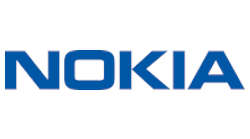Modern transit operators are looking at the automation and Internet of Things [IoT] trends with great interest. There is the promise of shorter headways using automated trains for improved capacity. IoT sensors and closed-circuit television (CCTV) could enable greater safety, as well as preventative, pro-active maintenance. And, meanwhile, customers’ appetite for high-speed, on-board services only grows. Unfortunately, all of these require safer, more secure and more robust communications systems than exist today.
The good news is that new radio spectrum in North America is also bringing a new era in transit communications, which will see private LTE networks providing a whole new platform for transit automation and improved customer services.
Modern transit and suburban rail communications systems have tended to proliferate over the years. As new applications were layered over old, however, each one adopted its own proprietary approach — whether it was signaling, emergency calls, on-board communications, telemetry or digital signage. All of which has increased complexity and operational costs. So far, the comfort of relying on the tried and true has outweighed the cost of converging these systems into one.
Part of the convergence problem has been the mix of wireless and wired systems. There has been increasing interest in wireless systems in recent years, such as Global System for Mobile Communications – Railway (GSM-R), WiMAX and Wi-Fi, which have been used for signaling, train-to-ground and onboard customer communications. Unfortunately, none of these systems is robust enough to meet all the needs of transit and rail operators. Instead, they have tended to add additional layers and increased the complexity and cost.
Despite these issues, many operators would probably put up with this heterogenous mix of communication systems if it weren’t for the move to automation. Automation of transit lines is one of the most cost-effective ways to increase capacity, which is achieved through shorter headways. However, automated subways and light rail place additional large burdens on communications. Additional CCTV cameras for obstacle detection must be installed and managed onboard, with imagery constantly sent to the control center. Numerous additional CCTV cameras are needed inside the train for passenger security. Supporting the enormous amount of data generated by these cameras requires an ultra-broadband, ground-to-train radio network.
Most Wi-Fi networks in place on metros are incapable of carrying both safety-critical and non-safety-critical traffic, due to limitations such as a lack of sophisticated quality of service (QoS) support and shortcomings with mobility. Wi-Fi also uses unlicensed spectrum, meaning both interference from other users and the risk that a hostile party could seek to jam or invade the network, undermine safety. Additionally, standard Wi-Fi does not monitor the quality of the air interface in real time, which is essential for any mission-critical service.
Fortunately, there is an answer on the way. It begins with the introduction of new wireless spectrum in North America called Citizens Broadband Radio Service or CBRS. The U.S. government has released this spectrum in the 3.5GHz band, which was previously reserved for military applications. It is specifically designated for private wireless networks using the 4G/LTE mobile protocol. These private LTE networks can be deployed not only as a replacement for WiMAX and Wi-Fi, but potentially all other legacy communications systems — greatly reducing complexity, operating costs and improving safety and reliability.
LTE is normally used by mobile telecom companies to provide broadband cellular wireless services. It is a much more robust and secure system than Wi-Fi, for instance. It is deployed worldwide and it has a well-developed ecosystem of end devices and suppliers. It also overcomes all of the issues associated with Wi-Fi. It is a highly secure, mobility-oriented standard that accommodates high bandwidth, IP-based applications with full control over QoS for real-time, full duplex voice and video applications. It has very low latencies (down to 10ms) as well, so that it can support GoA level 3 driverless train operation (DTO) and level 4 unattended train operation (UTO).
The LTE standard includes multiple encryption and authentication features, rendering it secure by default. Additionally, when properly designed, an LTE network has several mechanisms for auto-reconfiguration in case of network failure — vital for an always-on railway communication network. These attributes make LTE superior for building a radio network able to support passenger connectivity needs, along with mission-critical operational applications such as train signaling, CCTV on-board and emergency communications.
If installing mobile cellular technology in a transit network sounds daunting and expensive, the good news is that it is now almost as easy to install a private 4G/LTE network as a Wi-Fi mesh network. In fact, a 4G/LTE network requires less installation infrastructure than a Wi-Fi network, since it needs less trackside radios to achieve a similar coverage. And, yet, it is far more robust, secure and capable of supporting far greater numbers of connections per access point. In terms of size and installation, there are now small cell 4G/LTE access points that are no larger or more complicated than a Wi-Fi access point and also feature plug-and-play installation. Multi-racks of servers for the mobile packet core have now been reduced to the size of a mini desktop PC.
For those worried that LTE will soon be supplanted by 5G, don’t be. Although the first 5G networks are being rolled out in 2019–2020, the ecosystem of devices and interfaces is far from mature. And, most of the features that 5G brings that are advantageous to the transit industry have already been incorporated into the later releases of 4G/LTE, including solutions that meet 5G performance levels such as jitter and delay.
Until recently, 4G/LTE has not been much discussed in the transportation space because the radio spectrum licenses have all been allocated to mobile operators. With CBRS, 4G/LTE is becoming available; capable of meeting the needs for a single converged communications system that not only supports automation and data in general, but all of the legacy communications systems as well. There are already various private LTE trials underway in the transportation space.
With private LTE, transit operators can safely and securely implement driverless technology, implement IoT, CCTV, telephony networks and provide mobile broadband on-board services for their customers. The release of the CBRS spectrum for private LTE networks is, thus, a game changer for the North American transit industry.
------
Pedro Bontempo Elmadjian is customer solution manager, Enterprise at Nokia Networks.



